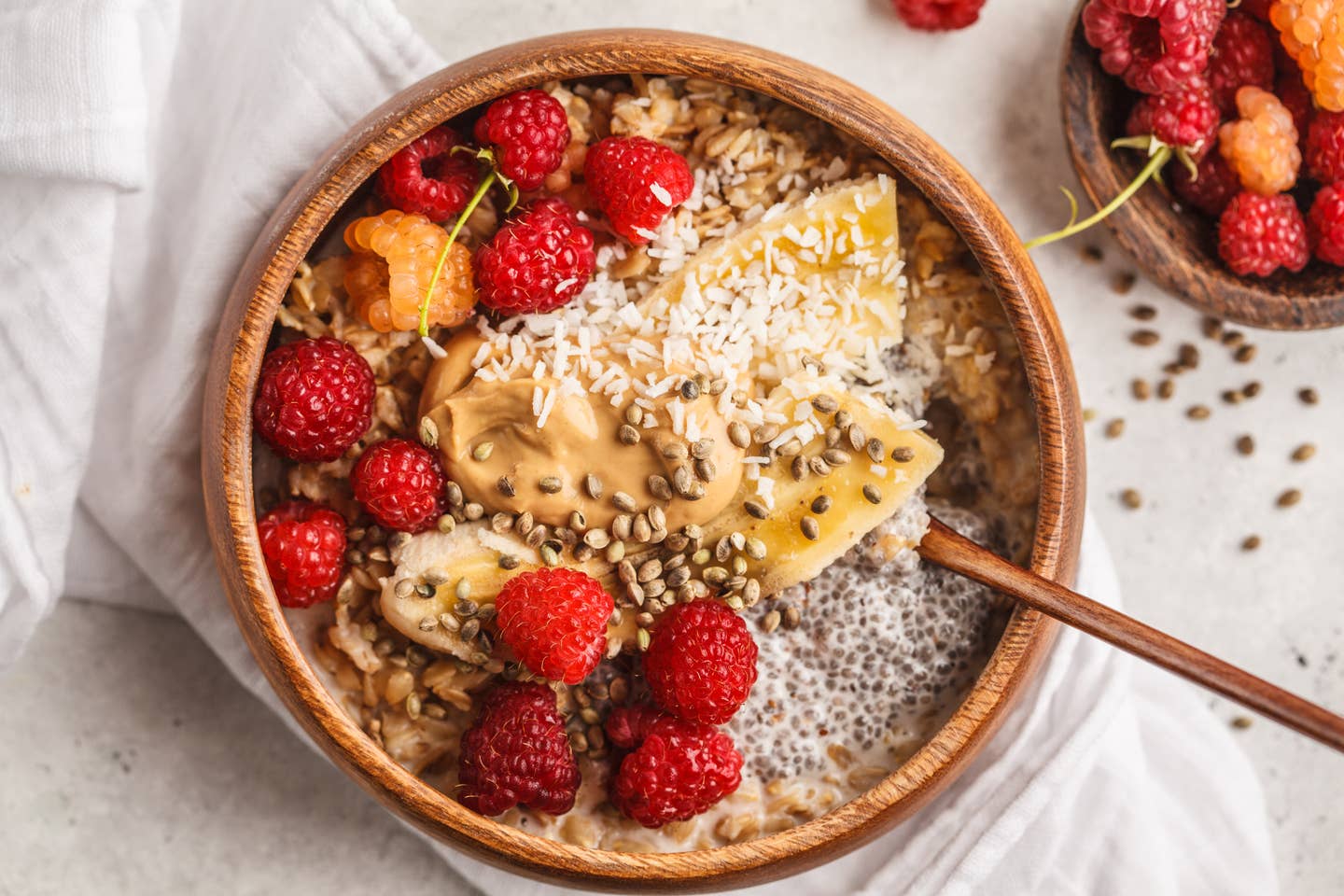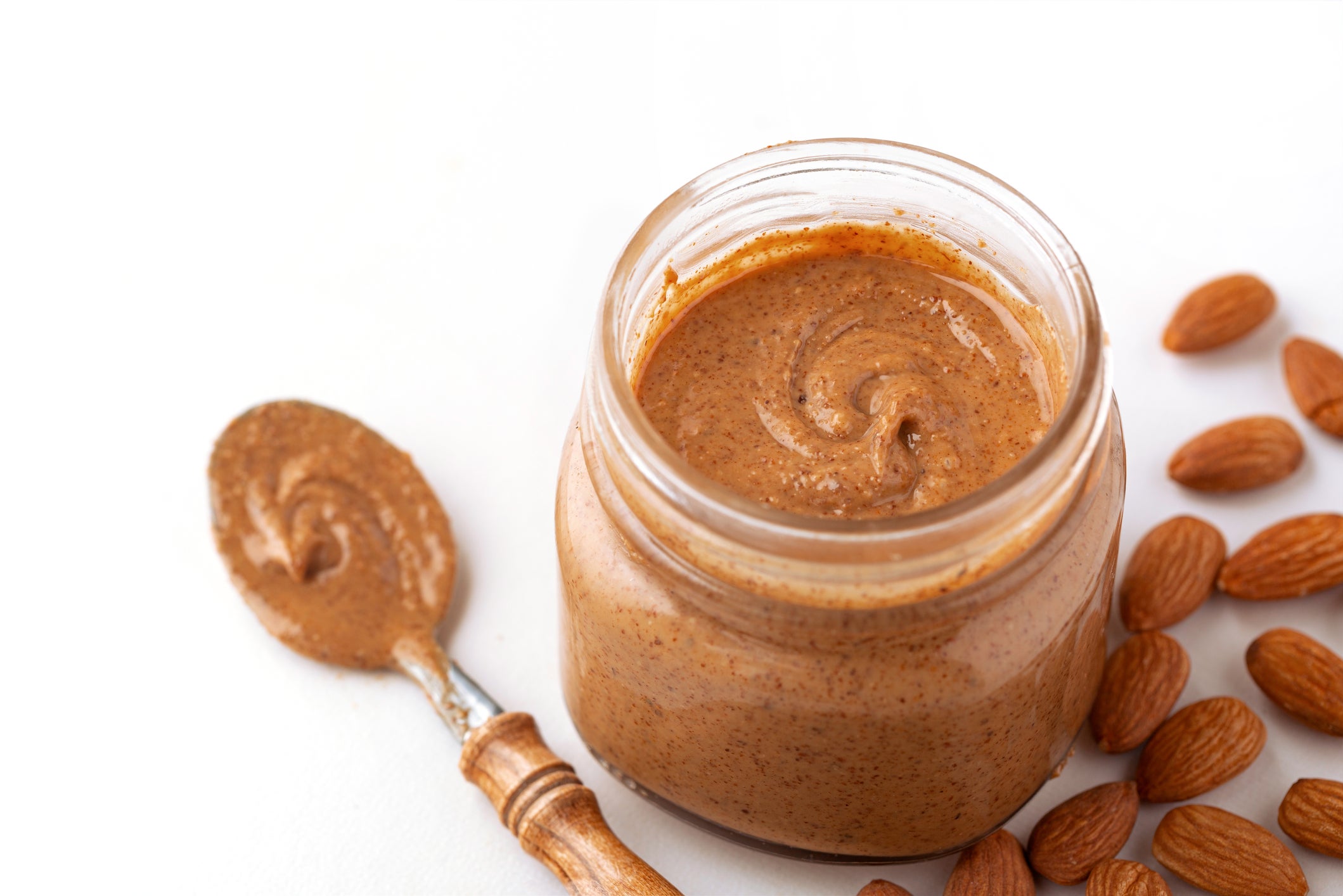
What Is the Healthiest Nut Butter? A Nutritionist Answers
We grew up on the classic peanut butter and jelly sandwiches, but now there’s way more than one nut butter in the game. While it can be comforting to stick with what we know, switching things up for a different spread could be beneficial for both your health and the environment, which begs the question, which nut butter is the healthiest?
Nut butter is simply ground-up nuts, with the most popular options being peanuts, cashews, or almonds. The natural oils of the nuts release as it’s broken down, which gives it a smooth consistency (or buy it chunky if that’s your preference). These nut butters can go great in smoothies, baked goods, or as sauces and dressings.
The true question remains, is one nut butter better than another? We’re breaking down the difference between almond, peanut, and cashew butter so you can determine which you’ll be grabbing on your next grocery trip.
What's the Healthiest Nut Butter? Here's How They Rank

- Getty Images
Almond Butter
Almond butter is the perfect swap for peanut butter if you’re looking to switch things up. The consistency and thickness are comparable, but you’re getting a little extra boost of nutrients like calcium and potassium. Almond butter goes well with sweet treats or savory meals, for example, many Asian-inspired dishes use nut butter in sauces. Just be sure to grab a jar that contains the only ingredient you need — dry roasted almonds.
One downfall that may make many people avoid purchasing almond butter is the impact that it can have on the environment (more on that below).
What is Almond Butter Made Of?
A good quality almond butter will use dry roasted almonds and skip any filler ingredients. Keep your eyes peeled on the ingredients label for unnecessary additions which include:
- Hydrogenated or partially hydrogenated oil: These oils are what can keep nut butter on the shelf for long periods of time, but they are also not so great for our health. The American Heart Association recommends avoiding any foods that contain “partially hydrogenated oils” (also called trans fats) because they are known to increase LDL or “bad” cholesterol while decreasing your “good” HDL cholesterol.
- Salt: While it’s ok to enjoy a little bit of salt here and there, it can be hard to track how much you’ve consumed when it’s added to food. According to the CDC, 70 percent of salt intake doesn’t come from the salt shaker, but rather processed foods.
- Added sugar: Whether it’s cane sugar, brown sugar, molasses, or syrups — grabbing almond butter with the addition of sugar can bump up the calories and could eventually lead to health issues down the road.
- Milk: While it’s uncommon to see dairy in nut butter, it’s not totally off the wall. You’ll often see milk added to the powdered almond butter or specialty brands that want to boost the protein content.
Almond Butter Nutritional Information
According to the USDA, 1 tablespoon (16 grams) of unsalted almond butter contains:
Calories: 98 kcal
Protein: 3.36 grams
Calcium: 55.5 mg
Potassium: 120 mg
Magnesium: 44.6 mg
When it comes to healthy fats, almond butter provides 5 grams of monounsaturated fatty acids and 2 grams of polyunsaturated fatty acids. It’s also lower in saturated fatty acids, the type that you want to limit in your diet, compared to the other nut butter at 0.66 grams per tablespoon.
Is Almond Butter bad for the environment?
While almond butter can bring several nutritional benefits to our health, what is it doing to the environment? Around 80 percent of the almonds sold worldwide come from the state of California, a location that has the perfect environment to grow almonds but also deals with droughts. The problem here is that to produce only 16 almonds, you need 15 gallons of water.
When you deal with a drought, you don’t have water, and without water, the almonds aren’t produced. This leaves farmers turning to underground aquifers which are hard to refill and causes the land above it to start sinking. When that happens, the aquifers can’t hold as much water as they once could.
Fortunately, in 2015, the Accelerated Innovation Management Program was launched and is working on improving the sustainability of almond growing, and coming up with innovative ways to improve water management and efficiency. Plus, growing almonds creates much less greenhouse gas emissions and uses less land than dairy.
Peanut Butter
When you take those ballpark peanuts, remove their shells, and grind them up, that’s when you wind up with peanut butter! This versatile nut butter goes well in smoothies, dressings, and even soups.
Unlike almonds, peanuts are extremely environmentally friendly. According to the U.S. Sustainability Alliance, every single part of the peanut is utilized. The hulls (or shells) are used for animal feed and the vines from the plant are added to the soil to help enrich it with nitrogen. They also don’t require much irrigation water, because they are grown in the southeast regions of the US that provide plenty of rain.
What is Peanut Butter Made Of?
Just like every other nut butter, all peanut butter needs is dry-roasted peanuts and a quality food processor to turn it into a tasty paste. You’ll often see these versions labeled as “natural” peanut butter, but don’t let that fool you. Always check the ingredient list to be sure.
Is Peanut Butter Healthy?
Many commercial peanut butter brands will include additives that keep the peanut butter lasting longer and tasting better.
Take a popular brand of peanut butter for example. Its website indicates that the creamy peanut butter version includes:
- Roasted peanuts
- Sugar
- Molasses
- Hydrogenated vegetable oils
- Salt
This brings the total sugar content up to 2 grams of added sugar, the saturated fat at 3.5 grams, and the sodium to 140 mg per 2 tablespoons.
Even their “natural” version contains similar ingredients, with the website indicating that it contains 90 percent peanuts (with the leftover 10 percent being filled with additional ingredients).
Peanut Butter Nutritional Information
The USDA lists 1 tablespoon (16 grams) of unsalted, smooth peanut butter to contain:
Calories: 95.5 kcal
Protein: 3.55 grams
Calcium: 7.85 mg
Potassium: 26.9 mg
Magnesium: 26.9 mg
A quick glance back at the almond butter nutrient breakdown shows that peanut butter contains significantly less calcium and potassium than almond butter, but it has comparable fat content at 4 grams of monounsaturated fatty acids and 2 grams of polyunsaturated fatty acids. Unfortunately, peanut butter is a little higher in saturated fats at 1.65 grams per tablespoon.
Cashew Butter
Last, but surely not least, is cashew butter. This nut provides a butter, salty, and almost sweet taste that pairs well with a variety of recipes you would use both almond and peanut butter for.
When you go shopping for cashew butter, you may notice the price tag is on the high end compared to the other two nut butters. That’s because cashews are grown in a toxic shell that we cannot eat, therefore the processing takes much longer. Not to mention, they are only able to be harvested once per year.
What is Cashew Butter Made Of?
Again, all it takes is a simple blend of a food processor and you wind up with cashew butter. It only requires the solo ingredient, but many companies may include salt, sugar, and oil additives. Avoid reaching for a cashew butter that is “with honey” or “with cinnamon” and instead find the ingredient list that is short and sweet.
Cashew Butter Nutritional Information
According to the USDA, 1 tablespoon (16 grams) of unsalted cashew butter contains:
Calories: 93.9 kcal
Protein: 2.82 grams
Calcium: 6.88 mg
Potassium: 87.4 mg
Magnesium: 41.3 mg
Cashew butter is also comparable to peanut and almond butter when it comes to fat breakdown. It contains a little more monounsaturated fatty acids at almost 5 grams but has less polyunsaturated fatty acids at just over 1 gram. It relates more to peanut butter when it comes to saturated fat, containing 1.56 grams per tablespoon. Of the 3 options, it has the lowest amount of protein (but not by much!).
Bottom Line: The healthiest nut butter for you depends on your lifestyle.
All of these nut butter options bring various benefits to the table. If you’re looking for additional nutrients and healthy fats, try almond or cashew butter. If you’d prefer to choose a food that's more sustainable, peanut butter is the best for the planet. Just be sure to nix the options that have unnecessary filler ingredients, and know that each nut butter packs a calorie punch.
Wondering what the best vegan butter brands are? We’ve got you covered! Read our page about the 5 best vegan butters and find one that suits your taste today.
For more expert advice, visit The Beet's Health & Nutrition articles.
More From The Beet






